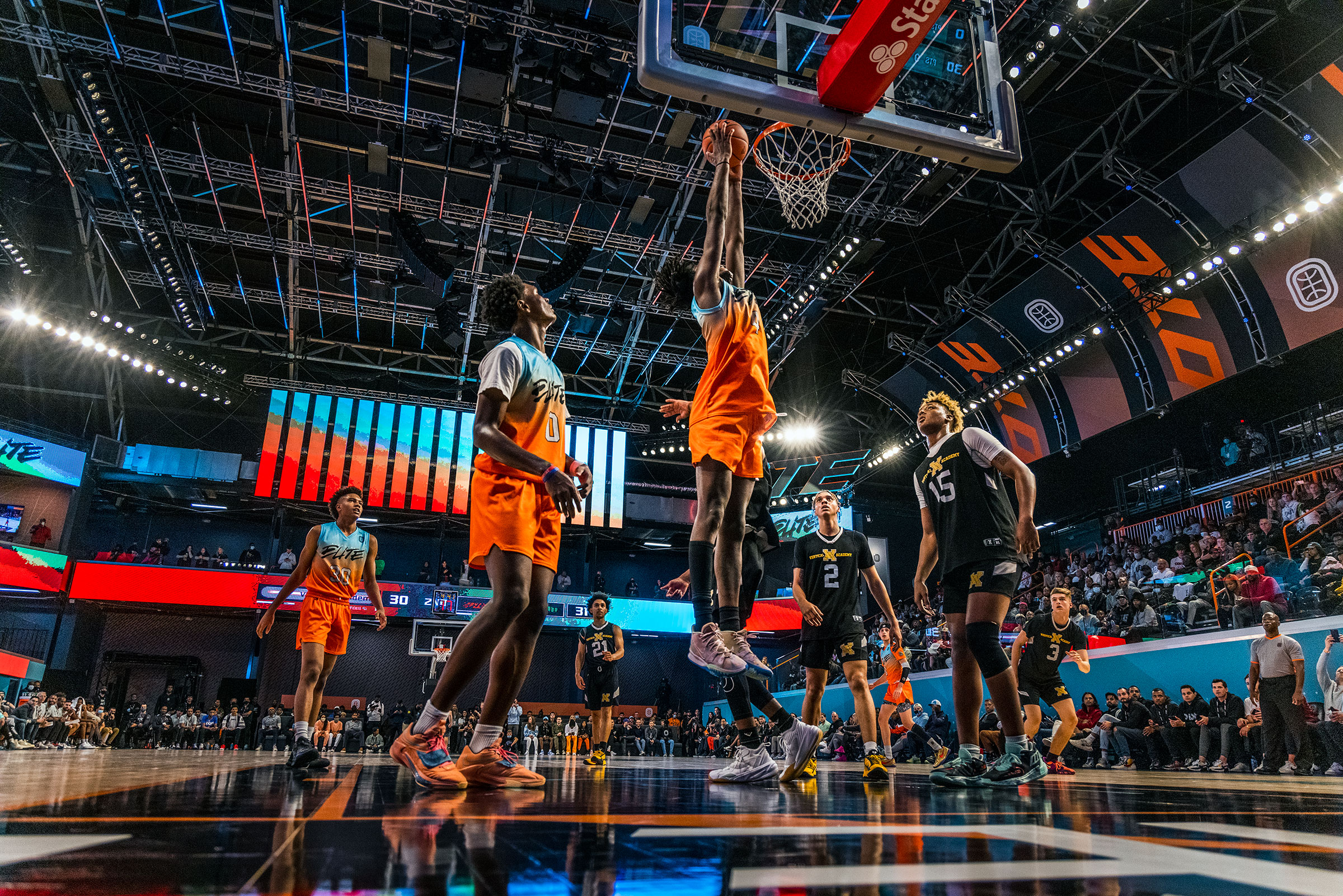Most high school hoops players across America—if they’re lucky—travel to their games in a yellow school bus. They might—if they’re lucky—compete in front of the local junior college scout. But members of Overtime Elite, the new professional basketball league for 16-to-19-year old stars, arrive in style, to play before a far more influential audience.
On a crisp autumn morning in Atlanta, more than two dozen Overtime Elite (OTE) pros, who make at least six-figure salaries, stepped off a stretch limo bus, one by one. The players entered the brand-new 103,000 sq.-ft. facility built by Overtime, a five-year-old digital sports media startup that developed a huge following after posting Zion Williamson’s high school dunks on Instagram. Waiting for them at OTE’s inaugural “pro day”: some 60 pro scouts, including reps from 29 out of 30 NBA teams, sitting along the sideline and behind the baskets. They leafed through the scouting packet provided by OTE, which included information like the wingspan and hand width of each player plus advanced statistics on their performances during preseason scrimmages, whispering to one another about which ones they were excited to see.


As the league’s coaching staff led players through NBA-style drills, the scouts eyed Amen and Ausar Thompson, a set of rangy 6-ft. 7-in. twins from Florida who skipped their senior year of high school to join OTE. The brothers made clever dribble moves, before driving down the lane to throw down thunderous dunks. “The Thompson twins are obviously top talents,” says ESPN draft guru Jonathan Givony, who was also in Atlanta for the OTE pro day. “Those guys are ready to be seriously considered as NBA draft picks.”
OTE made a strong first impression, but the evaluators universally agreed that not all of the 26 OTE players in the gym were bound for the NBA. Given the supply of global talent chasing that dream, and the precious few spots available, elementary math suggests such an outcome is all but impossible. The coaching came across as high-level. Anton Marshand, a scout for the Cleveland Cavaliers, expects to make frequent trips to Atlanta this season. “For us to be able to evaluate them now and see their growth over time, that’s the key,” says Marshand. “It’s a pro environment.”

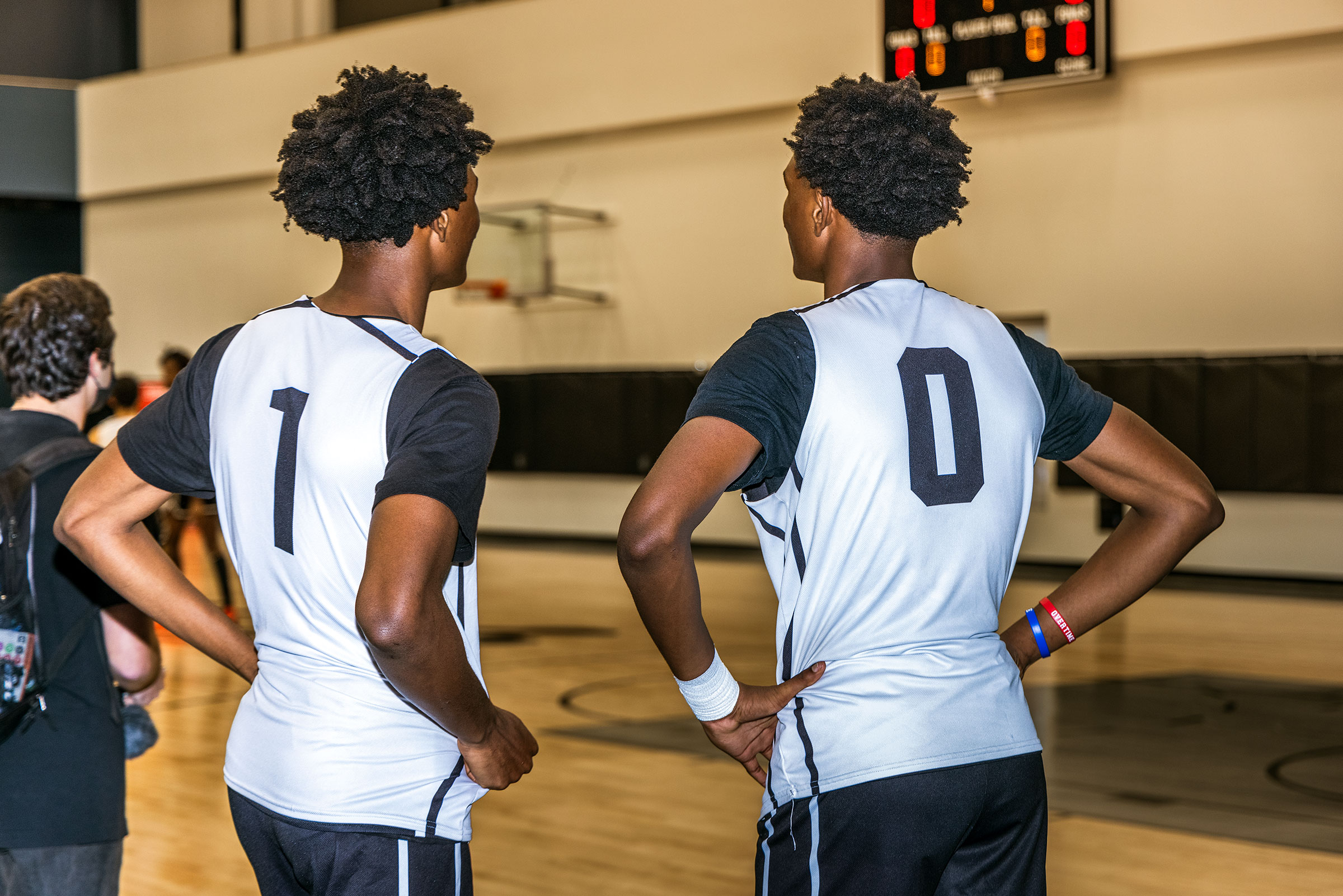
OTE is launching at a landmark moment in the history of American sports. For decades, talented teenagers in fields like acting and music could monetize their unique gifts by signing lucrative, life-changing financial agreements. But archaic rules and attitudes largely kept athletes from doing the same, preventing them from cashing in until they reached major pro leagues like the NFL or the NBA. Those restrictions are now going the way of the peach basket. In June, the Supreme Court captured these shifting assumptions concerning athletic amateurism in a ruling that prevents the NCAA from capping education-related benefits. In a scathing concurring opinion, Justice Brett Kavanaugh wrote that the business model of the NCAA, an organization that has long kept college athletes from being paid—despite the millions in revenue many of them generate for their institutions—would be “flatly illegal in almost any other industry in America.” About a week later, the NCAA, with public opinion and the highest court in the land turning against its outdated notions of amateurism, relented, and allowed college athletes to profit off their names, images and likenesses.
Read More: Why The NCAA Should Be Terrified Of Supreme Court Justice Kavanaugh’s Concurrence
Naturally, businesses—many of them upstart tech platforms—have stepped into the fray, hoping to turn a profit by helping young athletes cash in on new opportunities. Brands like Icon Source, INFLCR and PWRFWD are promising to open up sponsorship opportunities, build social media presence and sell the merchandise of college athletes. A company called Opendorse aims to connect athletes with sponsorship opportunities—not unlike, say, how Uber connects drivers with riders, or Airbnb matches hosts and vacationers. With the loosening of name, image and likeness, or NIL, restrictions, Opendorse expects to quadruple its annual revenue in 2021 to more than $20 million. Tim Derdenger, a professor at the Carnegie Mellon Tepper School of Business, estimates that the NIL market for college athletes alone could reach more than $1 billion in five years.
But by betting on the popularity of high school basketball players, Overtime is taking a more radical, and potentially transformative, approach. Overtime’s pitch to players: forget college basketball. OTE promises to pay six-figure salaries and offer access to high-level coaching and skill development in a sports-academy setting, to prepare athletes for a pro career. OTE has also hired teachers and academic administrators so that players can secure their high school diplomas. The operation has financial backing from an All-Star investor lineup, which includes Jeff Bezos’ Bezos Expeditions fund, Drake, Reddit co-founder Alexis Ohanian and a slew of NBA players like Kevin Durant, Carmelo Anthony and Trae Young. In March, Overtime raised $80 million.
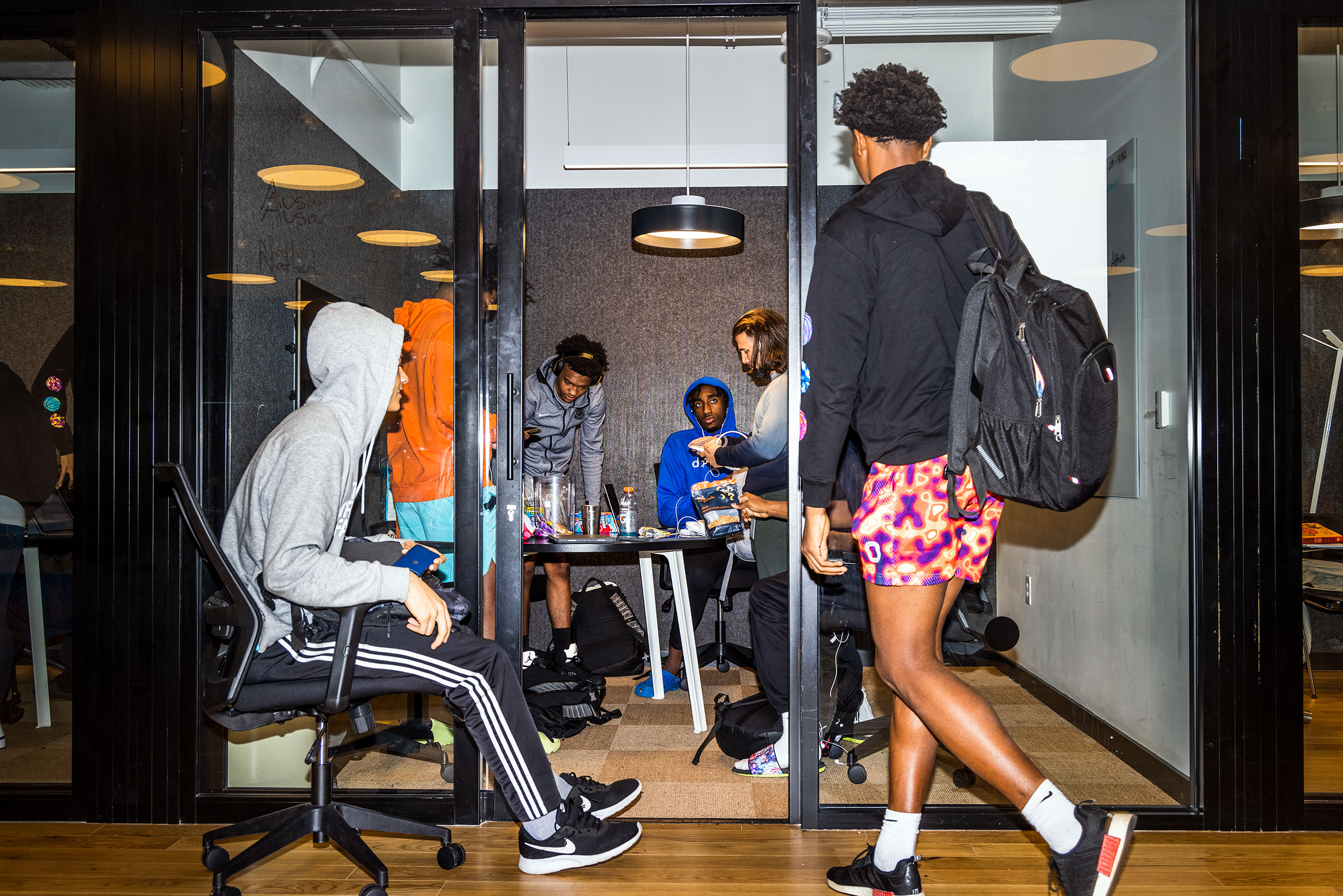

Signing with OTE isn’t a decision players take lightly. Under current NCAA rules, athletes with OTE contracts are classified as professional players who have forfeited any eligibility to play college basketball, an enterprise that, despite all its flaws, is a proven path to lifelong educational benefits and the NBA. If an OTE player does not make it to the NBA or secure a professional gig overseas, Overtime is pledging to kick in $100,000 to pay for a student’s college education. “You can’t beat that,” says Bryson Warren, a would-be high school junior from Arkansas who’s eligible for the 2024 NBA draft. “At the end of the day, I can still be a doctor and make NBA money.”
For some, however, the OTE deal sounds almost too good to be true. At pro day, the same scouts who looked up to the ceiling of OTE’s airplane-hangar-size structure in wonder, asked the same question: How is OTE going to survive? The sports landscape is littered with failed professional leagues. Overtime has spent millions on a school, a coaching and basketball operations and performance staff rivaling that of NBA teams, not to mention salaries and housing for its players and a massive new structure.
Dan Porter, Overtime’s CEO and co-founder, has heard all the skepticism. “Everyone wonders, What’s the business model?” he says. Porter points to OTE’s late-October opening weekend of games as a sign of the league’s promise: he says OTE content generated 23 million views, and 8.8 million total engagements, across social media.
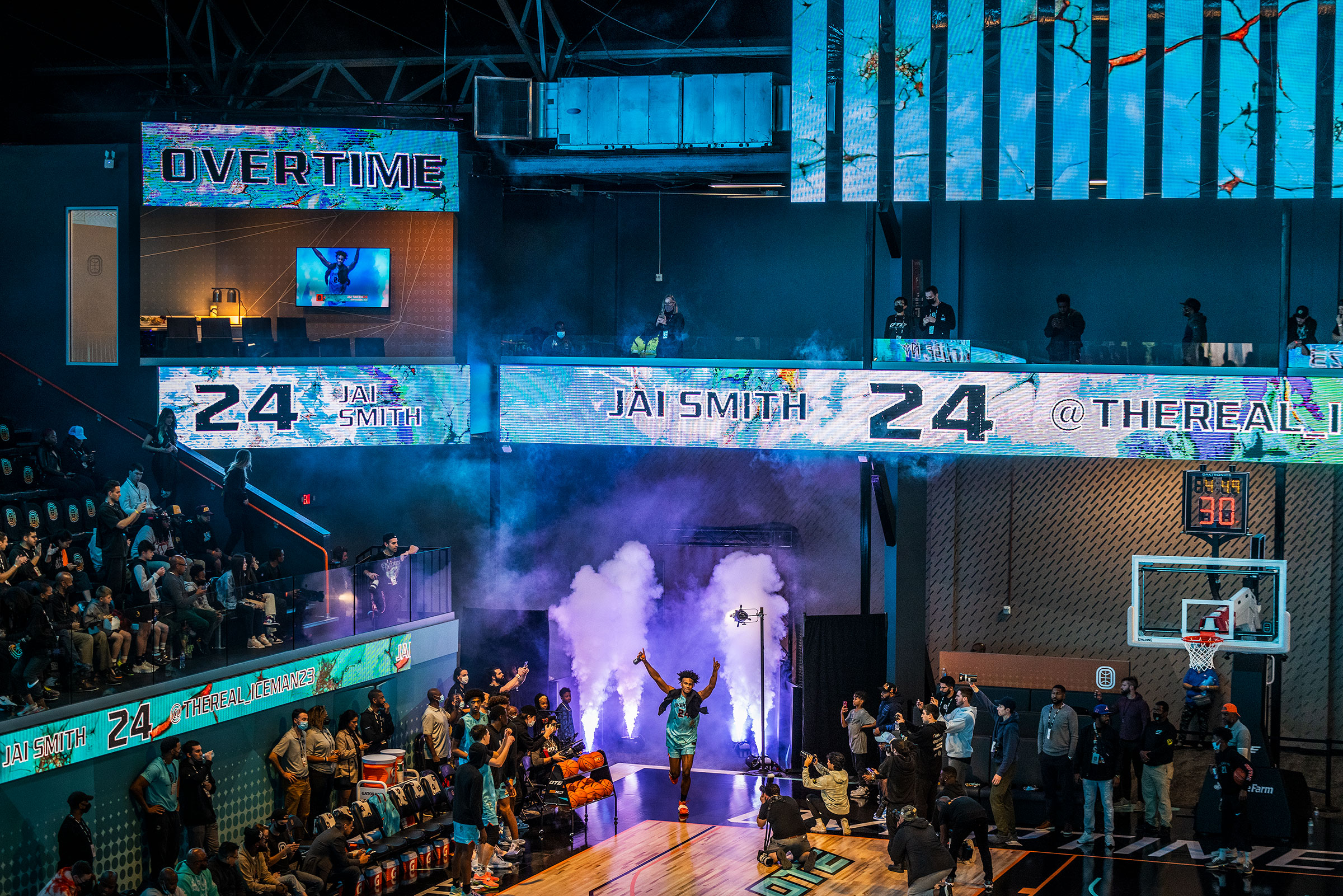
What’s more, now that top prospects can sign lucrative sponsorship deals while at proven collegiate powers like Duke, Kentucky, and Kansas, OTE may have to increase salary offers, further driving up its costs. And if Overtime’s marketing prowess helps the players build enough of a social media following to make OTE profitable, will that focus on building brands deter from their athletic development? OTE’s bottom line alone can’t thrive; the company needs to produce NBA draft picks. “We told kids when we recruited them,” says OTE director of scouting Tim Fuller, “our national championship is when you shake [NBA commissioner] Adam Silver’s hand.”
A lot is riding on OTE’s fate. Success has potential to create economic empowerment and more options for young, mostly Black athletes who for far too long have been funneled into a system that mostly enriches white coaches and administrators, but not them. It could spawn copycats across sports (with the unintended consequence of further igniting the hyperspecialized, hypercompetitive $19 billion youth sports feeder system that often offers parents a false sense of their kids’ pro potential). OTE’s failure, however, might not cost just Bezos and Drake a rounding error of their overall wealth. Much worse, this disruptive idea could derail dreams.
A new model
OTE placed its recruiting call to Troy Thompson in the spring, at a fortuitous time. Troy’s twin sons, Amen and Ausar, had just played nearly 30 games over five weeks on the AAU circuit, where overuse injuries are becoming more common. The boys, who were based in Florida, had traveled to Illinois, Wisconsin, Arizona, Missouri and Georgia during this swing. They were able to showcase their ability, but the twins barely had time to practice on the all too common travel sports grind. Were they actually improving? “OTE called right when my mind was going, ‘O.K., I’ve got to find a way to slow this thing down,’” says Troy.
The OTE offer—a six-figure salary, plus the emphasis on player development in an academy setting—sounded attractive. “It’s like we’re getting to fast-forward their dreams,” says Troy, who works in security. Ausar was on board. Amen, however, took a little more convincing. “He’s hardheaded,” Ausar says of his twin brother, who was sitting next to him during an OTE post–pro day brunch of pancakes, shrimp, lobster, grits and potatoes, served at a Georgia Tech off-campus apartment complex that houses the OTE players. (It abuts a golf course, and includes a leafy courtyard and a pool.) Amen was looking forward to chasing another high school state title. He had always dreamed of playing college basketball, even as a “one-and-done” player who enters the NBA draft after freshman year. Kansas, Florida, Auburn and Alabama had already offered the twins basketball scholarships, and Kentucky had reached out with interest. “It’s just what I’ve known,” Amen says of college basketball. “And it’s shown to be proven.”
After “a million conversations,” says Amen, he was on board. He ultimately thought he had outgrown scholastic competition. In Atlanta, the Thompsons mention to TIME that they have just missed their final high school homecoming. But Amen insists he’s still going to prom. “I’m just going to walk in,” says Amen. He quickly realizes party crashing won’t be so simple. “As soon as I left the school, they didn’t let me shoot in the gym anymore,” says Amen. “So, actually, I will need to have a date [from the school] to prom.”
Adjusting to Atlanta took some time. At first, Troy says, his sons complained about the OTE curfew. According to OTE’s dean of athlete experience and culture, former 10-year NBA veteran Damien Wilkins, during the week players must be in the residence building at 10 p.m., and in their apartments at 11 p.m. But Amen and Ausar have gotten accustomed to the rules, and they insist they have no regrets about forgoing their senior year of high school, and the potential to win a national championship in college, to join OTE.
Troy believes them. “I guess they’re loving it where they are,” he says. “Because, guess what? Dad hardly ever gets a phone call.”
The OTE weekday starts around 9 a.m. when the players arrive—on the limo bus—at school. (Starting in early November, classes will be held at the OTE facility; before then, while building construction was being completed, the classes took place at a WeWork space in Atlanta’s Buckhead neighborhood.) On an October day, one group of students are solving radical expressions in math; in social studies, a trio of players listen to a lecture about English colonial labor systems. A skeleton stands in a common area: the science teacher is reviewing anatomy. Students work on their “persuasive essays,” which they must turn into a 30–60 second commercial spot. Ausar, reading from a marble notebook, touts the benefits of water aerobics: “Who doesn’t love fun times in the pool?” Amen has picked stretching. “Remember, stretching over stress,” Amen says, snapping his fingers and pointing to the camera.

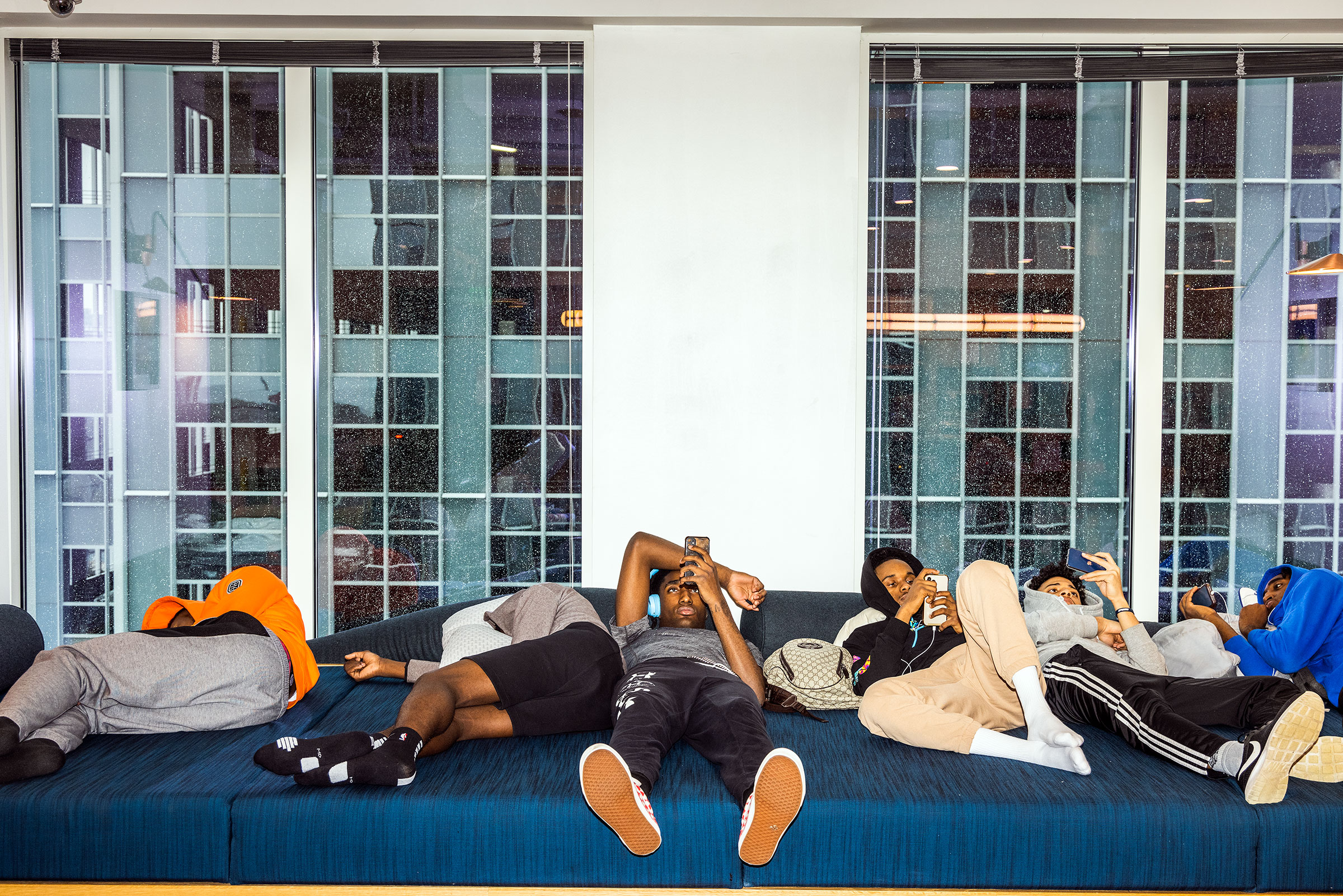
Academics last around 3.5 to 4 hours a day, before the players grab lunch and head to basketball practice. Class sizes are small: the student-teacher ratio rarely exceeds 4 to 1. OTE’s academic head, Maisha Riddlesprigger—Washington, D.C’s. 2019 principal of the year—has heard too many times for her liking the assumption that OTE’s academic component serves as window dressing. “I think that comes from this deficit mindset that you can’t be an athlete and a scholar at the same time,” says Riddlesprigger.
Veteran educator Marcus Harden, OTE’s senior administrator for academics and development, admits he worried that these high school juniors and seniors with healthy bank accounts and pro basketball ambitions would tune out classwork. And while some OTE players are more invested in school than others—fighting student phone-scrolling habits in class is an ongoing battle—Harden insists that overall, the students have exceeded expectations. “We would be negligent if we sent them out into the world with fake diplomas,” says Harden. “Even with the short day, I can say we’re doing this with integrity.”
For the sake of students who might not make it in basketball, OTE must deliver on this promise. Still, former NBA player Len Elmore, a Harvard Law School grad and current senior lecturer at Columbia University’s sports management program, worries that even if the players who get injured or don’t pan out do return to college, they still might be worse off—savings accounts notwithstanding. “Come on, we’re talking about 17- and 18-year-olds who now have fizzled out at their dream,” says Elmore. “And now you expect them to go to a college that they were recruited by, or that they could have been recruited by, and enroll and go to class and watch other guys playing college basketball, knowing that they could have done that? That to me could also create some mental health issues.”
‘It’s lit’
When Porter, the OTE CEO, was head of digital at superagency WME in 2016, he spotted a shift in the way Gen-Z and younger millennials consumed sports content. Young people were less interested in sitting in front of a TV to watch live basketball or football games. They craved stories, personalities and highlights. They wanted it on demand, on their mobile devices, specifically on the social media platforms that spoke best to them, like Instagram. Porter co-founded Overtime late that year, focusing at first on high school basketball. A proprietary technology allowed videographers to shoot clips in gyms across the country and upload them to the cloud; the company’s social media editors fired off their favorite highlights. Williamson, who despite being built like an offensive lineman could throw down 360-degree slams on his comically inferior schoolboy competition, emerged as Overtime’s first star.
The company built a young digitally-native cult following that has grown to more than 50 million followers across Instagram, TikTok, Snapchat, YouTube and other platforms. “If you are an ESPN or a traditional publisher, you can’t appeal to a young audience with a bunch of traditional sports programming,” says Porter. “You also can’t go on your accounts, and be like, ‘It’s lit,’ and a bunch of 50-year-old guys who are looking to figure out who they are going to start on their fantasy team are like, ‘I don’t understand what this is.’”
Overtime has since branched out into e-commerce, as well as longer-form programming, like a documentary about current Chicago Bears rookie quarterback Justin Fields that lives on YouTube (and attracted some 426,000 views). Blue-chip companies like Gatorade, McDonald’s and Nike have advertised on the platform; Rocket Mortgage sponsored a post in which Miami Dolphins rookie wide receiver Jaylen Waddle looks for houses in South Florida. When Overtime was recruiting former Sacramento Kings and Philadelphia 76ers exec Brandon Williams to run OTE’s basketball operations, Williams, who was previously unfamiliar with the brand, knew he needed to consider the offer when his 10-year-old son gushed over the Overtime stickers that were sitting on his desk—he told Dad Overtime was kind of a big deal. Later, when some little kid spotted Williams wearing an Overtime shirt at an airport, the boy curved his hands into an “O”—a reference to the Overtime logo—as if approving Williams’ youth cred.
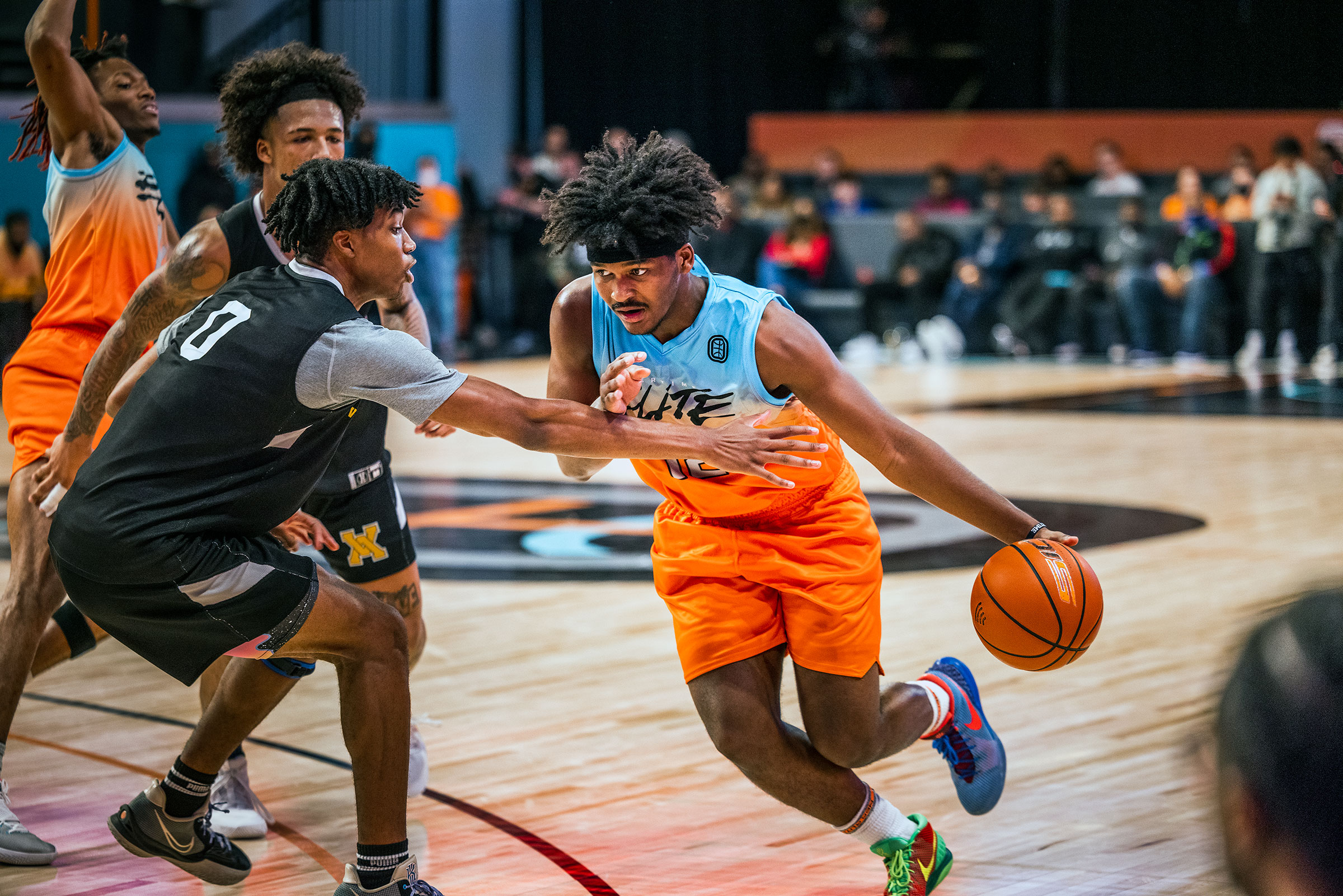

A few factors coalesced to give birth to Overtime Elite. For one thing, Porter got weary of hearing feedback from college basketball programs that they appreciated Overtime giving their recruits exposure on the high school level, since the schools could then capitalize on their popularity. “I’m like, ‘That’s good for you, but that’s not very good for me,’” says Porter. An Overtime-branded league could keep personalities in the company’s ecosystem and give the startup a valuable piece of intellectual property. And the experience of another early Overtime star, current Charlotte Hornets point guard LaMelo Ball, opened Porter’s eyes. Ball spent one of his high school years—and part of the season he would have typically spent in college before becoming eligible for the NBA draft—playing overseas in Lithuania and Australia. He became the third overall pick of the 2020 NBA draft, and won last season’s rookie of the year honors. To Porter, Ball’s experience proved that talented players were willing to try a different path to the NBA.
Former NBA commissioner David Stern, who passed away in January 2020, initially told Porter and Overtime’s other co-founder, Zack Weiner, that they were crazy. Overtime already had a compelling core business, and Stern knew from experience the hassles of running a sports league. But Stern eventually came around to the idea; his son, Eric, is one of OTE’s investors. Overtime Elite has signed multiyear, multimillion-dollar sponsorship agreements with Gatorade and State Farm. Both companies have prominent signage at the 1,100-seat “OTE Arena,” which is also part of the 103,000-sq.- ft. structure in Atlanta. OTE’s showcase court, which hosted its first set of games on Oct. 29, features LED lights and a Jumbotron. Topps is producing trading cards for OTE players; Porter says that “hundreds of thousands of dollars’” worth of cards have already sold, and that they should start appearing in Walmart, and hopefully Target, in December or January. Some NFT initiatives are sure to follow. OTE is not live-streaming games yet—Porter wants to create scarcity and buzz—but the content team is creating a mix of highlight packages and an episodic behind-the-scenes docuseries on the players.
Overtime—which has yet to turn a profit—expects annual revenue to reach up to $300 million in five years, with Overtime Elite bringing in about a third of that haul. The company, and its investors, are betting that Overtime’s built-in brand notoriety and audience will differentiate OTE from other upstart sports leagues that have failed. “We don’t have that same kind of cold-start problem,” says Porter.
‘Dunk lines for content’
But the high stakes aren’t limited to Overtime’s bottom line. Players are placing their futures in the company’s hands, which puts the onus on OTE’s basketball development staff to ensure that, at worst, each player receives at least a lucrative pro offer overseas. The players do have impressive tools at their disposal. During one practice, for example, a biomechanical engineering Ph.D. rushes to tuck a microchip into the shorts of a few players: this technology allows OTE’s four-person analytics and data science team, led by applied math PhD. and former Philadelphia 76ers researcher Ivana Seric, to track how far and fast players move during practices. This information allows the coaches to better control wear and tear. Cameras atop each shot clock on the OTE practice courts can show, for example, how far to the left or right players are missing their shots. They can adjust accordingly. A 10-person on-court coaching staff, led by former UConn coach Kevin Ollie (who won the 2014 men’s national championship with the Huskies) fans out at four different baskets during practice, allowing players to work on team concepts, like defending screens and pick-and-rolls, and individual skills (they take ample corner threes and floaters, both key tricks of the NBA trade).
Like any upstart, however, OTE has experienced hiccups. When Porter came to visit the academic session, a couple of players were unafraid to point out to him that the flimsy boxed roast beef and cheese sandwiches served for lunch—they may have fit it at the Fyre Festival—were subpar nourishment before practice. “This looks scary,” Porter admitted, eyeing the sandwich. “I wouldn’t eat it.”
OTE launched in March, and settled on Atlanta as its home in May, meaning the facility, which comes chock-full of amenities like two oversize bathtubs for recovery and a players’ lounge and NFL-size weight room—as well as classroom and office space—needed to be constructed in five months. A few days before OTE’s opening games Halloween weekend, Ollie shouted instructions at practice over hardhats’ drilling; construction detritus forced one door to remain open, allowing a cool Georgia draft to accompany the players on the practice floor.

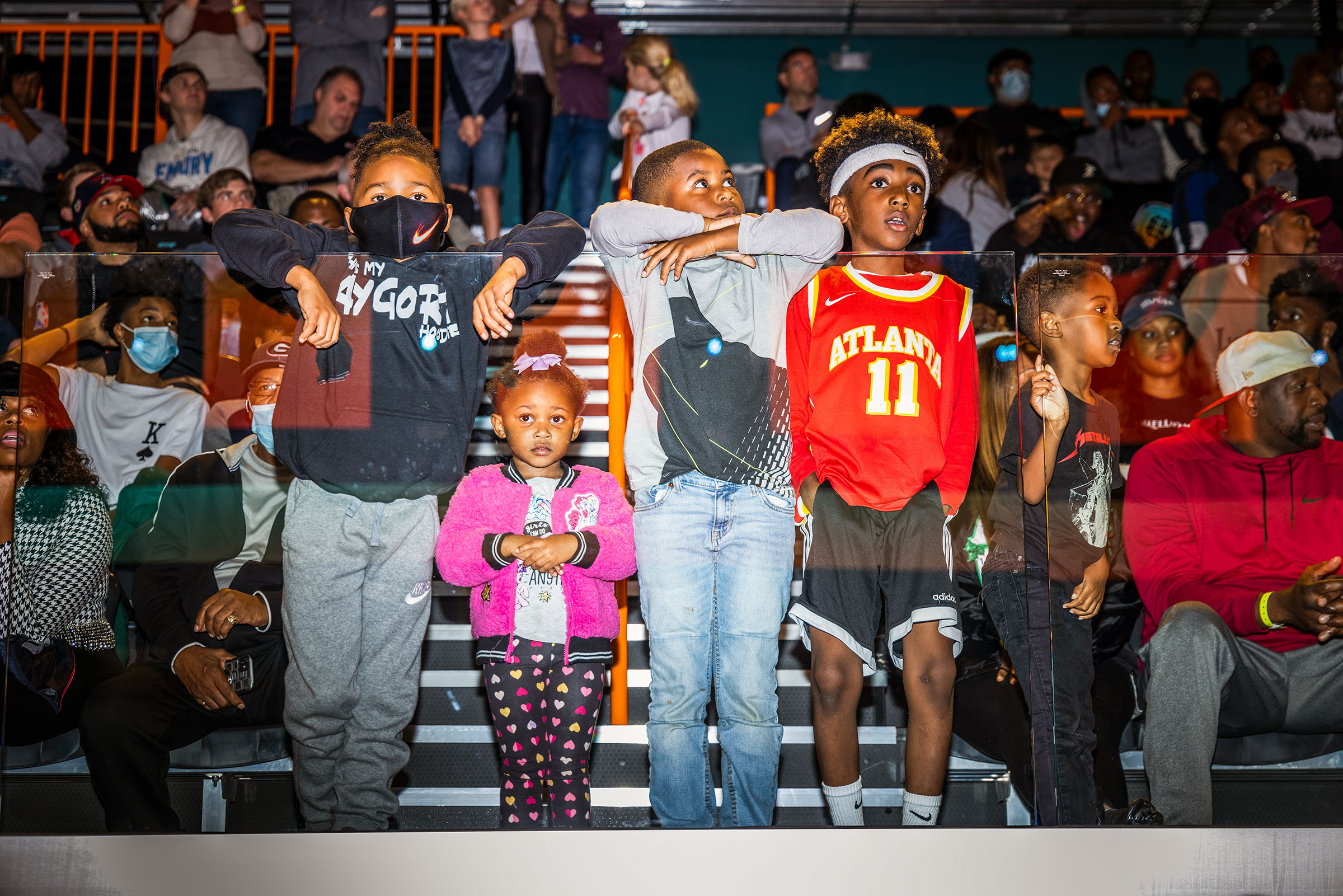
While OTE deserves credit for executing its vision so quickly, it could be trying too much too soon. “They’re kind of building the parachute after they jumped out of the plane here,” says Dr. Marcus Elliott, founder and director of P3, a southern California-based sports science institute that provides advanced biomechanical analyses of elite athletes.
Ollie was unhappy with this team’s effort at the first practice after pro day—and let the players know it. The energy was far from NBA-level, he told them. This scolding didn’t stop some of the players from lining up near a basket afterward, to show off their leaping ability for Overtime’s ubiquitous cameras. “Dunk lines for content,” said an OTE staffer who was looking on.
Dunk lines for content. You probably couldn’t find a more fitting phrase to encapsulate the year 2021 in sports media and culture. Or a more spot-on reminder that kids are placing their basketball gifts in the hands of a digital marketing juggernaut. “I see the potential of this disruption to lead to a much more just and better world for these young athletes,” says Elliott. “But I also see lots of peril. It’s not about getting paid 100 grand to play as a 16- or 17-year-old. It’s about getting your second or third contract in the NBA. And those are challenging and sophisticated blueprints to put together. And so the fact that their DNA has nothing to do with development, that’s concerning.”

Overtime insists all incentives align. The company has hired experts like Ollie and the data scientists because the growth of OTE’s business hinges on the Thompson twins, and others, achieving their basketball dreams. After practice, Amen watches film with an OTE assistant coach; Ausar takes part in a small group shooting session that ends at 6 p.m. They both know that to make it to the next level, they must improve on their outside shooting. “I’m going to be in the gym,” says Ausar. “I have nothing better to do. I don’t do anything in Atlanta. I just chill in my room and watch basketball.” Amen and Ausar have talked to each other about backup careers; they both believe they’d be solid hoops commentators. But that can wait. When asked where they both see themselves in two years, neither brother hesitates. Nor do any of the OTE players when asked about their futures.
“The NBA.”
More Must-Reads from TIME
- Cybersecurity Experts Are Sounding the Alarm on DOGE
- Meet the 2025 Women of the Year
- The Harsh Truth About Disability Inclusion
- Why Do More Young Adults Have Cancer?
- Colman Domingo Leads With Radical Love
- How to Get Better at Doing Things Alone
- Michelle Zauner Stares Down the Darkness
Write to Sean Gregory/Atlanta at sean.gregory@time.com
